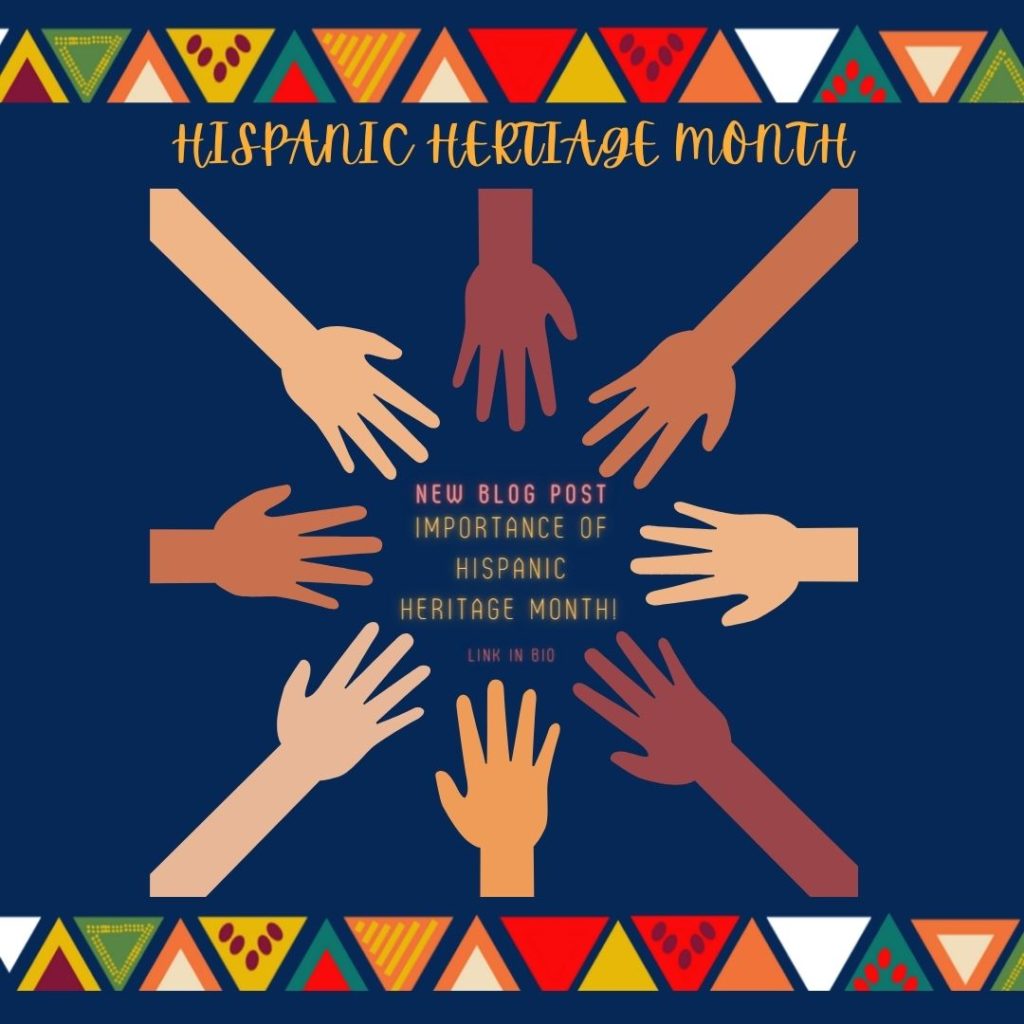If you have been keeping up with our weekly post in Invested Interests social media accounts, you would have noticed us posting weekly during Hispanic Heritage Month. Throughout the month, we focused each week on a new topic related to Hispanic culture, learning new facts and learning more about the culture itself. From Hispanic stats to Hispanic accomplishments, all to give our audience a better understanding of the Hispanic culture and the importance of celebrating Hispanic heritage month.
Background on Hispanic Heritage Month
From September 15 through October 15, Americans celebrate National Hispanic Heritage Month by honoring the histories, cultures, and accomplishments of American citizens with ancestors from Spain, Mexico, the Caribbean, and Central and South America. President Lyndon B. Johnson established Hispanic Heritage Week in 1968, which was enlarged by President Ronald Reagan in 1988 to cover a 30-day period beginning on September 15 and concluding on October 15. It became legislation on August 17, 1988, with the passage of Public Law 100-402. The 15th of September is notable because it marks the independence anniversary of Latin American countries Costa Rica, El Salvador, Guatemala, Honduras, and Nicaragua. Furthermore, Mexico and Chile commemorate their independence days on September 16 and September 18.
Along with honoring individual Hispanic Americans, Hispanic Heritage Month provides an opportunity to better appreciate the fundamental impact of Hispanic culture and heritage on all aspects of American society. Indeed, when Congressman Brown first sponsored Resolution 1299, he noted how many towns, cities, and states have names that can be traced back to Hispanic roots, demonstrating the tremendous significance of Hispanic Americans in defining and contributing to U.S. culture and history.
How to Celebrate Hispanic Heritage Month
Even if your family is not from Spain, Mexico, the Caribbean, Central, or South America, you can still participate in the month by participating in learning and cultural events that bring you closer to these nations. Sharing other people’s cultures with your families and friends fosters respect and curiosity, as well as helps them comprehend the enormity of the globe we live in. You can do this by reading books by Latino/Hispanic writers or watching movies about or by Latino/Hispanic filmmakers. You can even cook traditional foods! You can continue to educate yourself about the culture and increase your own knowledge about Hispanic culture.
Build your Cultural Intelligence
While the Hispanic heritage month is coming to an end on October 15, I don’t want everything that you have learned throughout these various weeks to come to a halt. Instead, I encourage every one of you currently reading this blog to continue learning about other cultures, including the Hispanic culture.
Being culturally intelligent is an essential skill to have as it could help you build meaningful relationships with people from different cultures. You start by building meaningful relationships when you actively learn about individuals’ customs, cultures, and views with an open mind free from ethnocentrism (applying one’s culture or ethnicity as a frame of reference to judge other cultures). By not assuming or clouding your mind with your biases of certain cultures.
Cultural Diversity in the Workplace
Throughout the weeks, we celebrate the Hispanic culture, however, there are still things in this world that need to change. For starters, let’s start with cultural diversity in the workplace. Cultural diversity in the workplace has been shown to improve workplaces by increasing employees’ productivity in the workplace. Having a diverse workplace allows companies to get a broader perspective of ideas or processes. People from different cultures have different past experiences that can be beneficial by providing an overarching knowledge of possible solutions. Laboratory studies have found that diversity in the workplace has shown a positive correlation with diverse groups with their effectiveness.
According to author Mazur, creativity thrives on diversity. Meaning, multicultural organizations are known to be better at problem-solving, possess a better ability to extract expanded meanings, and are more likely to display multiple perspectives and interpretation when dealing with complex issues. 35% more likely to perform at a higher level. Overall, increasing the groups’ functionality and ability to problem solve by looking at a problem with different angle points.
Our current society is filled with many individuals from various walks of life, just encompassing any cultural background you can imagine. However, this is not the circumstance in the modern age business workplace. Cultural diversity and inclusion in this day and age are essential, and it is an issue that should be resolved within the business industry.
How to Make an Impact for Hispanic Heritage Month
First, you have to realize that it is easier to change the business environment from a business concerned about diversity. To have teams that have people from various backgrounds and cultures to increase the perspective and diversity in the business workforce! At Invested Interest, we identify those companies that promote fair and equitable working conditions and companies with diverse boards and workforces. Diversity in all its aspects, from cultural diversity, LGBTQA+, to women in high-level management. Companies like Accenture, Fisher & Paykel, and other companies in our diverse portfolio.




